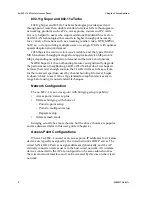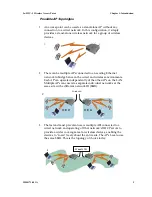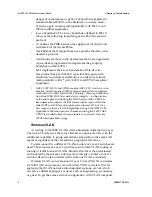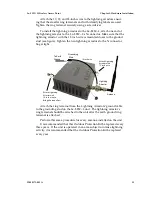
3e–525C–3 Wireless Access Point
Chapter 1: Introduction
6
29000171-001 A
3e–525C–3 Wireless Access Point
Chapter 1: Introduction
29000171-001 A
7
Bridging
The wireless bridging function in the 3e–525C–3 allows use as a
bridge, in a number of alternate configurations, including the following
popular configurations:
• Point-to-point bridging of 2 Ethernet Links;
• Point-to-multipoint bridging of several Ethernet links;
• Repeater mode (wireless client to wireless bridge.)
Default Configuration
The 3e–525C–3's default configuration is an Access Point/Bridge.
Data Encryption and Security
The 3e–525C–3 Wireless Access Point includes advanced wireless se-
curity features. Over the AP band, you have a choice of no security, Static
WEP, WPA, or AES-CCMP, depending on your mode of operation. Some
level of security is suggested. Static WEP gives you a choice of 64-bit or
128-bit encryption. WPA includes the option of using a WPA pre-shared
key or, for the enterprise that has a Radius Server installed, configura-
tion to use the Radius Server for key management with either TKIP or
AES-CCMP. Bridging encryption is established between 3e–525C–3’s and
includes use of AES-CCMP encryption.
SSID
The Service Set ID (SSID) is a string used to define a common roam-
ing domain among multiple wireless access points. Different SSIDs on
access points can enable overlapping wireless networks. The SSID can
act as a basic password without which the client cannot connect to the
network. However, this is easily overridden by allowing the wireless AP
to broadcast the SSID, which means any client can associate with the AP.
SSID broadcasting can be disabled in the 3e–525C–3 setup menus.
WEP
WEP is an older encryption standard but is preferable to no encryp-
tion. If the 3e–525C–3 is configured with WEP encryption, it is compatible
with any 802.11b PC Card configured for WEP.















































